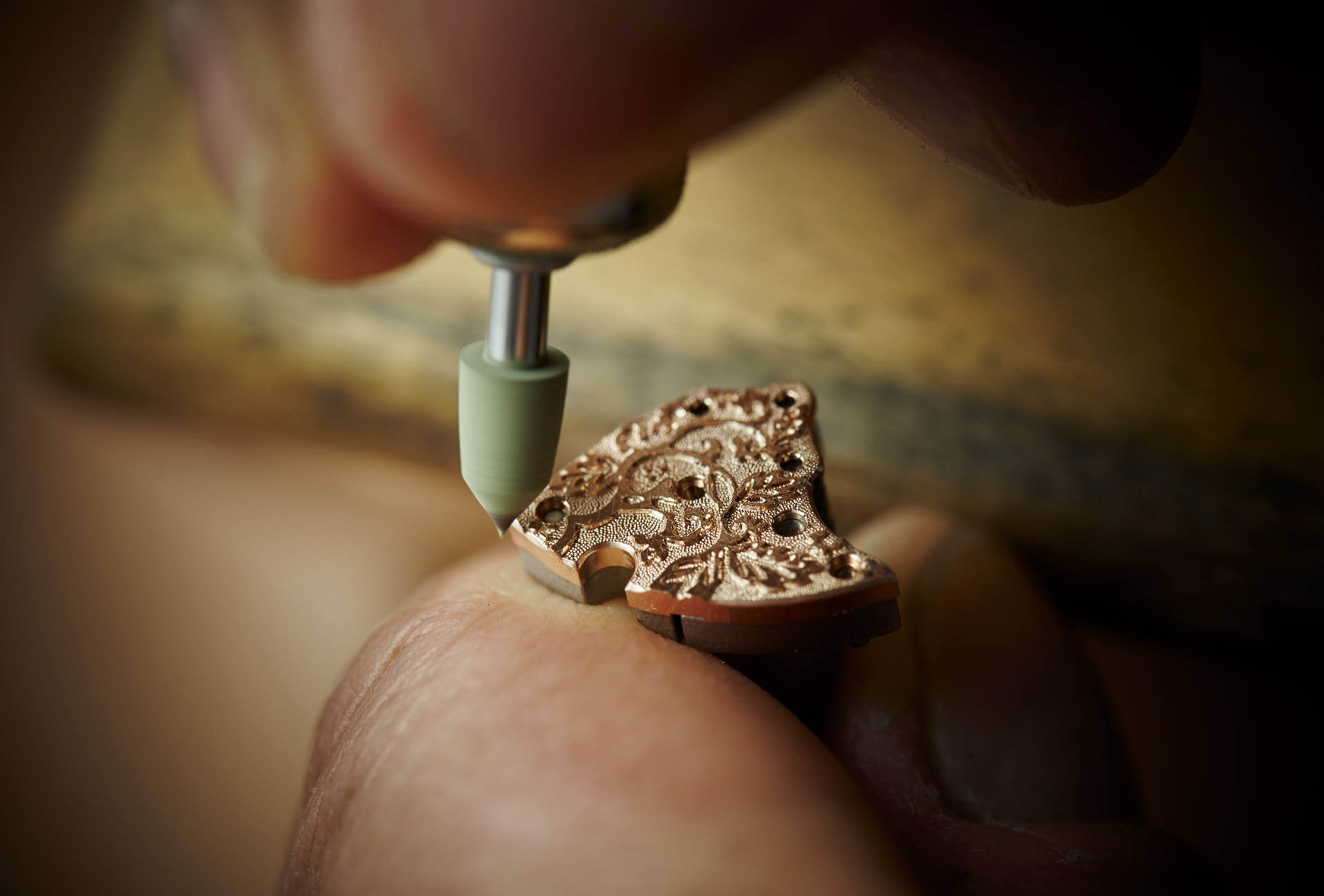Patek Philippe’s Flamme setting is an important development in gem-setting as it applies to watches. Essentially, it solves the problem of light return. First a bit of background: the most popular ring setting for diamonds is the Tiffany-style prong, and the most prized cut is the ideal-cut round brilliant. There is a very good reason for these two preferences: light return. What gives diamonds their brilliance is the reflection of light bouncing off a diamond’s inner facets and out through the table (top). For a diamond to reflect the most light, it must first absorb as much light as possible. The Tiffany prong setting holds a diamond in claws that sit high above the shank so that the base or pavilion is exposed, allowing light to enter and then reflect upwards through the table. This is called light return, and is enhanced by cutting the diamond in a certain way. Ideally it should have a perfectly symmetrical round brilliant cut, consisting of 57 facets that are mathematically calculated to reflect as much light as possible through the top and sides of the diamond.
On the bezel, the gem-setter sets rows of diamonds into the metal as usual, but then takes a sharp burin and splits the gold between each diamond.
The problem with setting diamonds into watches is that they are set into the metal, restricting light from entering the pavilion. This is partly compensated for by the watch industry’s convention of using Top Wesselton diamonds, a term that signifies the highest color grade possible, and which also tends to encompass high clarity and cut values. Top Wesseltons go a long way to making up for the decrease in light return caused by covered pavilions. However, it was only a matter of time before some enterprising watch company devised a method of putting diamonds into watches in a way that exposes the pavilions to light. Not surprisingly, it is Patek Philippe who has cracked the code.
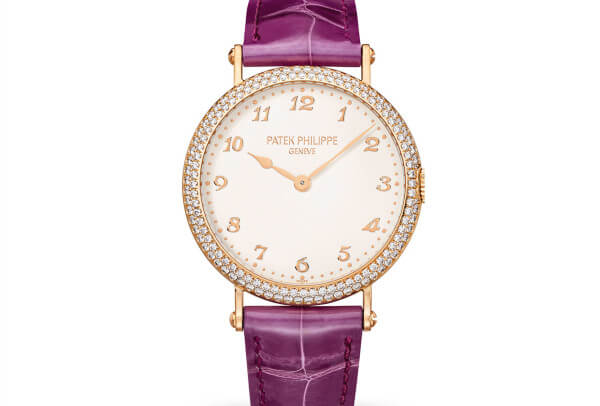
Patek Philippe Calatrava reference 7200/200R
The trick to the Flamme setting – a term Patek Philippe has registered for the watch industry – is to expose part of the pavilion. On the bezel, the gem-setter sets rows of diamonds into the metal as usual, but then takes a sharp burin and splits the gold between each diamond, exposing part of the lower facets and allowing light to pass through. Not only does the technique release more brilliance, the grooves created by the burin form a lace-like engraving pattern around the diamonds that adds even more sparkle.
The venue for this new technique is the Patek Philippe Calatrava 7200/200R, the diamond-set version of the ladies’ watch introduced in 2013 with the Caliber 240. The classic Calatrava, with its rounded officer’s style case and signature straight lugs with screwed strap bars, is a simple, classic design serving as a canvas for the striking light show created by the Flamme-set diamonds. Altogether, 142 diamonds totaling 1.08 carats are Flamme-set into the bezel of the Patek Philippe Calatrava 7200/200R watch in two staggered rows, arranged in descending order of size. The Patek Philippe Calatrava 7200/200R has a silvery grained dial with Breguet-style Arabic numerals, round minute markers and Poire Stuart hour and minute hands, all in applied 18k rose gold. It is fitted with a hand-stitched, polished, purple alligator strap with large square scales and a prong buckle (the best option for a ladies’ watch, since it fits more snugly than a deployant clasp).
The watch is designed and finished in accordance with the rigorous standards of the Patek Philippe Seal.
It contains the brand’s ideal ladies’ movement, the automatic Caliber 240. It is ultra-thin (2.53mm, with a case thickness of 7.37mm) because of its micro-rotor, which is fully recessed into the plate and made of 22k gold. The Caliber 240 has Patek’s patented Spiromax balance spring, made of silinvar, as well as its Gyromax balance wheel, ensuring an accuracy rating of -3 to +2 seconds per day. The 36.75mm case is 18k rose gold, and it is water-resistant to 30 meters. The watch is designed and finished in accordance with the rigorous standards of the Patek Philippe Seal.
Chopard’s Esprit de Fleurier Peony L.U.C XP 35 mm.
Chopard also does something harder than it looks with the new Esprit de Fleurier Peony L.U.C XP 35 mm: it depicts the floral motif in a way that is both unique and subtle, not an easy feat considering the extensive overuse of the flower as a way to distinguish ladies’ watches from men’s. The peony is represented on the dial using carved mother-of-pearl set with diamonds in a pattern that resembles the outlines of the peony’s irregular petals. Chopard’s stylized representation is perfect because it reflects the uneven petal arrangement of the real-life peony.
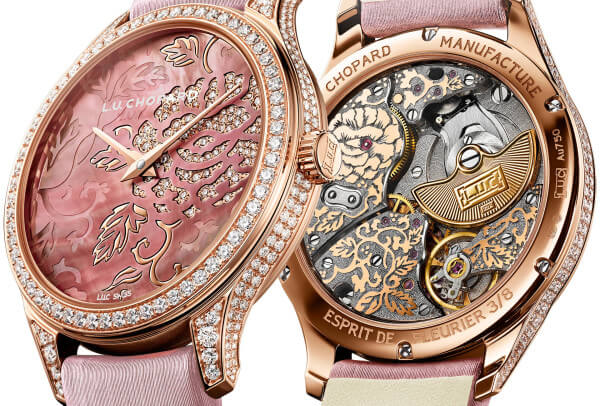
The real highlight of the Fleurier Peony, however, is the decorated movement, visible through the caseback. The bridges and plates are engraved using a rare craft called Fleurisanne engraving, a technique that involves removing metal to form a raised motif, usually in a scroll or floral pattern. Once raised, the motif is polished and the base surrounding it is stippled by hand, one dot at a time, to create a grainy surface and then rhodium-plated for contrast. Fleurisanne engraving was developed and practiced in the 19th century in Fleurier, Switzerland, where the Chopard manufacture is located. It was part of the special cachet of the region’s watchmakers. Chopard has revived the tradition and trained its craftsmen in the art. It takes two and a half weeks to complete one watch, including two weeks just for the engraving of the movement.
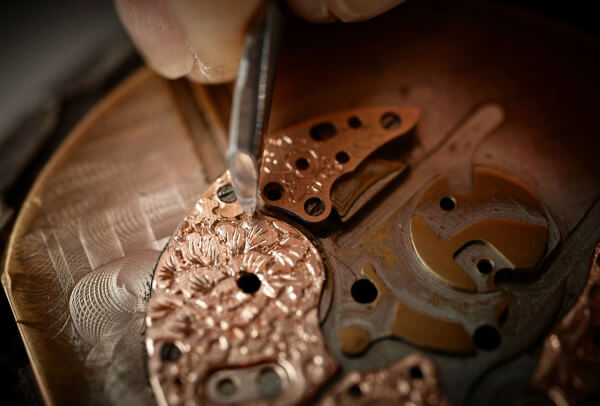
The Esprit de Fleurier Peony not only has a high watchmaking exterior, but also an elite movement inside. It contains the L.U.C automatic Caliber 96.23-L, with two stacked barrels for a 65-hour power reserve and a micro-rotor that keeps it to a slim 7.5mm cased thickness – keeping a watch under 9mm has become essential now in the ladies’ category. Few manufacturers are creating slim automatic calibers for ladies’ watches, and Chopard has a definite advantage with its in-house manufacture capabilities.
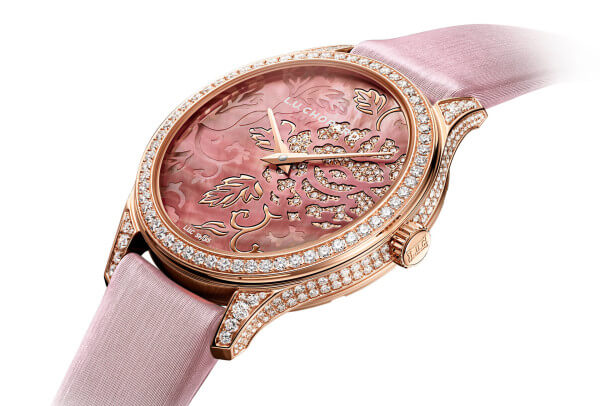
The Esprit de Fleurier Peony may be particularly geared to the Asian market. It is made in a limited edition of eight, a lucky number in Asian culture, and the peony represents wealth and honor in Asian culture. Under the Tang dynasty, peonies were grown on a massive scale and the blossoming of the peony reflected the prosperity of China itself. It is symbolic of good health, abundance and happy marriages. This is not to say the watch wouldn’t appeal to a North American audience, especially to anyone who appreciates the delicacy of the Fleurisanne engraving.








